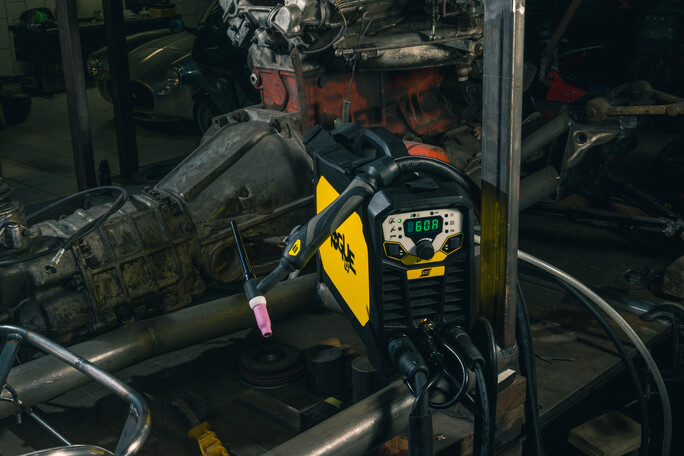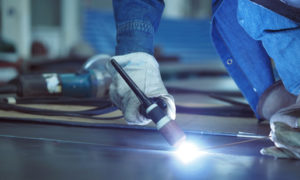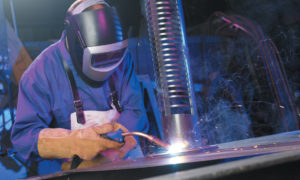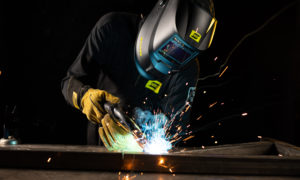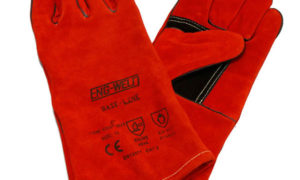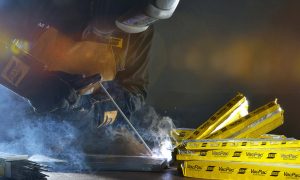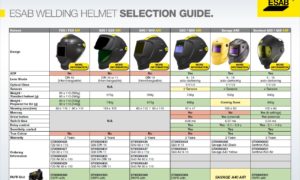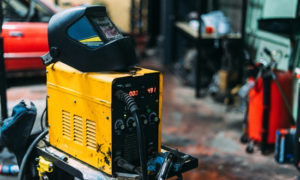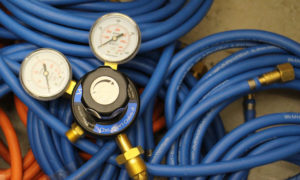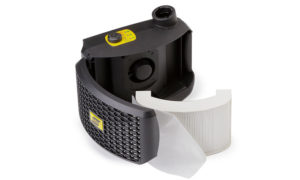Choosing the right Arc Welder
At Engweld we are well versed in the art of Arc welding; a technique that is used for making durable connections between metal parts. By making use of a power supply to create an electric arc to create an intense and localised heat which then melts, joins and fuses metals together. This intense temperature the arc creates allows, for example, for the edges of the weld to be melted and fused with filler metal, in the form of either a rod or a wire depending on the method used, although not all work requires a filler metal to be added.
There are three main types of arc welding technologies:
- MMA welders
- MIG/MAG welders
- TIG welders
Before we get our teeth into what each of these welding technologies and techniques are, there are a few key points we will look at first.
How to Choose an ARC welder?
When it comes to choosing an ARC welder there are certain criteria that each type meets, and unfortunately, there is not one single process of welding that is suitable for all applications.
You should always take into consideration:
- The intended use, is it for occasional maintenance, production or for high quality welding?
- What type of material will you be welding?
- How thick is the material you will be welding?
- What power supply do you have access to?
- What is the machine’s duty cycle, and how would this affect the work you intend to do?
By answering all these questions, you are sure to find the ARC welder that most suits your needs.
What is an MMA Welder?
Also known as a ‘stick welder’, an MMA welder is an electrical transformer that delivers a high level of electrical current at the output. By bringing the electrode close to the part to be welded, a short circuit and high-temperature electric arc occur which locally melts the metal parts to be welded as well as the electrode itself.
The electrode consists of a metal core and a protective layer to prevent oxidation. The core is used as the filler metal for welding, while the protective layer must be removed once the weld has cooled. The electrodes are therefore consumables whose composition and diameter must be adapted depending on the metal you are working with and the work you are carrying out.
MMA inverter welders are compact and lightweight, allowing for a better welding quality thanks to their precise power regulation and are generally equipped with a safety device that cuts off the current in case the electrode is sticking.
Main Points:
- Manual welder.
- Inverter technology.
- Coated electrodes.
- For minor repairs rather than large jobs.
MMA Welding key questions.
What is Hot Start? – Hot Start is a special feature for MMA or stick electrode welding. The machine delivers a peak of current when striking the arc, which significantly increases the ease of starting electrodes. Especially useful for an imperfect surface job or when using ‘difficult to run’ electrodes.
What is Arc Force? – Sometimes referred to as ‘Dig’ or ‘Arc Control’, it is a similar feature to Hot Start, except that it operates during the welding process. It greatly assists in stabilising the arc, preventing it from cutting out during the weld and preventing the electrode from sticking, as when it senses a short circuit the machine will deliver a peak of current.
What is Anti-Stick? – Anti-stick is a feature whereby the welding machine will sense when the electrode is sticking, where it will collapse the welding current to prevent the electrode from continuing to weld itself to the job, allowing it to be easily detached or broken free.
See the full range of MMA & Arc Welders supplied by Engweld.
What is a MIG/MAG welder?
A MIG/MAG welder is also a form of an arc welder, here, the electrode is replaced by a coil of wire that unwinds as the welding torch consumes the wire. Again, the type of wire depends on the work you are doing. As it is the filler material different metals require different fillers and of varying thicknesses depending on the work.
MIG or MAG welders use gas to protect the weld bead from oxidation produced by the ambient air, which is released through the torch at the welding site.
- MIG (Metal Inert Gas) welding uses an inert gas such as argon or helium. It is suitable for stainless steel, light alloys and non-ferrous metals.
- MAG (Metal Active Gas) welding uses a mixture of argon and CO2, or argon and oxygen, which reacts with the welding to improve the quality of it.
By choosing the right gas, or gas blend, MIG welding and MAG welding can apply to all common metals. The weld produced by these welders is of a higher quality than MMA welders, allowing for the welding of thinner sheets and is more suitable for production, automation and robotisation. MIG welding and MAG welding are also easier to learn, generally speaking than MMA welding or TIG welding.
It is possible to use a MIG welder without a gas supply, through the use of a wire filled with a powder that evaporates during welding to replicate the inert gas blanket that protects the weld from oxidation. While MIG welding allows for cleaner welding and is cheaper due to the fact the solid wire is less costly than the filled wire, gasless welding frees one hand from the bottle and is more suitable for outdoor work as it is less sensitive to drafts.
Main Points:
- Flux-cored wire.
- Solid wire.
- Coil of wire.
- Active gas.
- Semi-automatic welder.
- Inert gas (neutral).
See the full range of MIG Welders supplied by Engweld.
What is a TIG welder?
Through the use of a non-fusible electrode, an inert gas and a filler metal, a TIG welder can weld thin layers and weld with precision. Coming with either manual or semi-automatic operation, where the welder will either hold the auxiliary rod in their hands or the welding machine is equipped with a reel filled with filler material.
Again, with TIG welding the weld beads are protected from corrosion by the inert gas. This method generally produces high-quality results, particularly when dealing with thin sheet welds or tight welds.
While the electrode is non-fusible, it will still generate wear and therefore needs to be sharpened regularly as the electrode must have the correct tip shape for a quality electric arc to form.
TIG welders are either gas-cooled or liquid cooled welders. On a low-intensity weld gas cooling is sufficient, however, for higher intensity welds a liquid-cooler is essential to prevent overheating.
Main Points:
- High-quality welds can be attained.
- Can work with thin sheet metal.
- Used for non-ferrous metals.
- Inert gas.
- Non-fusible electrode.
- Semi-automatic capability.
See the full range of TIG Welders supplied by Engweld.
For more information from Engweld or for help in choosing an ARC welder, please get in touch.

